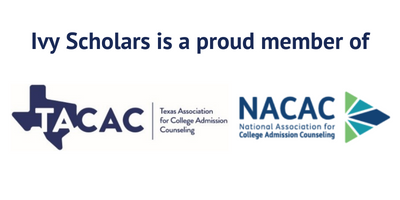Admissions officers are people too (despite how distant and frightening they might appear), and like all people they sometimes make mistakes. This sometimes happens on an individual level, but far more impactful, and worrying for students generally, is when it happens on a wide level, impacting large numbers of students.
This is a nightmare scenario for many students, but how likely is a mistake to happen, and what happens when one crops up? In this article, we’re going to look at some particularly notable missteps by admissions departments at universities across the country, and explore why things went wrong, and what happened next. We’ll also touch briefly on whether or not this is something you should be worried about when crafting your own applications. Let’s jump right in!
UNC Chapel Hill
Back in 2007, this excellent public university accidentally sent out 2,700 admissions emails to students who were still being considered; some of whom were later admitted, others rejected. Why did this happen? As with so many of these mistakes (as we will see time and again going forward) the answer is human error.
In this case, an admissions officer composed an email to a group of students who were chosen for admission. Instead of sending it to the correct group, a second selection of students was picked, one whose final fate had not yet been decided. The email those students should have gotten was one asking for mid-year grades, but a couple of misclicks and the mistake was set.
A retraction and apology was sent out the next day, with all 9,500 students under review receiving an explanation of what went wrong. This is all the more impactful of the time in which it occurred, in 2007, only around 20,000 students applied to UNC Chapel Hill, with around 7,000 admitted. Thus a significant fraction of potential students were impacted by such a minor error.
UC San Diego
The large and storied UC system suffered a large and storied failure of their own in 2009, when UC San Diego accidentally sent out 28,000 accidental false admissions to students who were actually rejected from the school; congratulating them and inviting them to a tour of campus only to then have to send a correction email later that same day.
UC San Diego did not explain how exactly the error occurred, but what happened was that an acceptance email was sent out to every one of the 46,000 students who applied, rather than just the 18,000 who had actually been admitted. While this was noticed immediately and corrected within hours, there was still a great rising and dashing of hopes for a great many students.
This mistake is particularly notable for the scale of it, with emails sent out to the entire applicant pool. While the students had been notified of their results via an online portal prior, many still called the school, their hopes renewed, only to have them dashed again. These students, sadly, had no recourse.
Emory University
So what Emory did was less of an “Admissions Mistake” and more what some might allege constitutes fraud, but it impacted admissions at the school, so let’s talk about it. In 2012, Emory announced that since at least the year 2000, they had been misrepresenting the GPAs, test scores, and class ranks of students who were admitted to the school to US News and other ranking organizations.
The reason was simple: they wanted to be higher on the rankings, and many of the highly rated students admitted by Emory chose to attend other schools. Instead of working harder to recruit these students, Emory turned to the far simpler approach of just making up numbers that made them look good. According to my friend who is a lawyer, this is very naughty, and you shouldn’t do it.
This practice was apparently noticed multiple times by various Emory employees, who promptly reported it to their supervisors. These reports were just as promptly ignored. The ruse was only brought to light when a new administrator came in, noticed some discrepancies, and launched an investigation.
US News did not say whether or not Emory’s actions had any real impact on their ranking, and Emory has pledged to be more honest in the future. They didn’t suffer any long term consequences from this beyond embarrassment, but they did add new institutions to ensure it doesn’t happen again. This just goes to show, students aren’t the only ones to stress about admissions.
Columbia
Continuing with the trend of colleges just lying, Columbia had their own rankings scandal a few years back. We discussed this more fully in another article, but to sum up, Columbia systematically misrepresented themself to US News to inflate their ranking, a fact exposed in a paper published by a member of Columbia’s faculty.
This was terribly embarrassing for the school, who dropped 16 places in the ranking. Not much else changed at Columbia, beyond promises of transparency, but this does go to show that you probably should take college rankings with a grain of salt. After all, all of the data used in them is entirely self-reported, so who’s to say that Columbai was the only college with a thumb on the scales?
UCLA
Returning to sunny California, when in 2012 UCLA sent an email to 894 students congratulating them on their acceptance to the school, when in reality they had actually been waitlisted. The email they sent did link to a form letting them know their actual status, but was the same email, with the same banner of congratulation proclaiming the students’ acceptance, as went out to admitted students.
While it is uncertain how or why this happened, this was the first year that UCLA used a waitlist, adding 2,900 students to it, though only a portion of those were impacted by this email. While some of these students may go on to be admitted, as we have discussed before when it comes to waitlisting, nothing is ever guaranteed.
University of Kentucky
Back in 2021, the University of Kentucky accidentally sent out 500,000 letters of acceptance to students who were not, in fact, accepted. This is made more embarrassing by the fact that a significant number of the students who were sent acceptances had not actually applied. This was also not a general University of Kentucky acceptance, but instead an offer to a very selective College of Health Sciences Program, one that normally admits 35 to 40 students each year.
Of those who received the offer, only a handful had even been admitted to University of Kentucky at all, much less the more competitive program. The error emerged from the school rolling out new digital tools during the Covid 19 pandemic, coupled with human error. While correction emails were sent out quickly, this was still an alarming situation for a large number of students. This does have the dubious honor of being one of the largest mistakes ever by number of students impacted.
Central Michigan University
In 2022, Central Michigan University offered a new twist on admissions mistakes. In this case, the issue was not acceptances, but instead scholarship awards. 58 students, all of whom had been admitted to the school, were mistakenly offered the prestigious Centralis Scholars Award, which covers full tuition plus room and board, and is normally only given to a single student each year.
The university was unable to afford to cover this mishap, but all impacted students were offered a full-tuition scholarship, though they would still be responsible for room, board, and other expenses. The admissions director at the time left the school after this as well, though it is unclear if this was a firing or resignation. The cause of the misstep was a test of new software, which unfortunately occurred on the same day the scholarship was set to be announced. While this was unfortunate for the students impacted, we do commend the school’s partial scholarship offer to them.
Sacramento State
In what is a common story for these missteps, in 2019, Sacramento State University in California accidentally admitted 3,500 students off the waitlist, significantly more than they had originally intended to. The error occurred when all waitlisted students who had indicated interest in the school were invited to the university’s admitted students day, where new students are invited to tour campus in the spring. This went out in March, long before any final decisions were made on how many waitlisted students they were actually going to admit.
In a twist from how this often occurs, however, the university chose not to rescind the offer, and to simply accept all 3,500 students off the waitlist. They estimated this would lead to a class size increase of 500; a large but manageable amount. The school did have some work to do to increase capacity in their most popular departments and majors, but we commend this choice. It is not the student’s fault the error occurred, and because they were on the waitlist, they were fully qualified to attend. It’s nice to find one of these stories with a properly happy ending.
Admissions Mistakes and You
Admissions officers are people, and like all people, they make mistakes sometimes. Usually, these are small things, and caught by a system of checks, but not always. As we can see from the examples above, stressful times, new and untested technologies, and compounding human errors can all combine to create the worst possible outcome.
That said, given how many students apply to college each year, it’s quite impressive how few mistakes we actually see occurring. Millions of students apply to thousands of colleges across the US each year, but mistakes like this only happen on occasion. That isn’t to say admissions is a perfect process, it certainly isn’t, but mistakes of this nature do happen relatively infrequently.
In some ways, college admissions mistakes are like any other rare disaster; they get a lot of attention due to both their rarity, and their relatability. Everyone can relate to the experience of applying to college, and the fear of this kind of mistake happening to them makes these stories gain traction quickly. That said, like most other sensational stories, the chances of this happening to you are quite low. This is something to be aware of, but not something you need to be overly concerned about.
Final Thoughts
Colleges have far more power than students in the admissions process, and these anecdotes illustrate that quite well. Despite the fault lying with colleges, in only a few cases do students have any recourse when this happens; at most, they get an apology. While the chances of this happening are quite small, these incidents are another sign of the struggle many students face when applying to college.
If you are looking for help with your own applications, or advice on how to navigate a process that is often stacked against you, then Ivy Scholars can help. We have a long history of helping students manage the trials and pitfalls of college admissions, and find their own place in higher education. If you are looking for help with your own applications, or want to talk about any aspect of the college process, then schedule a free consultation with us today. We’re always happy to hear from you.








